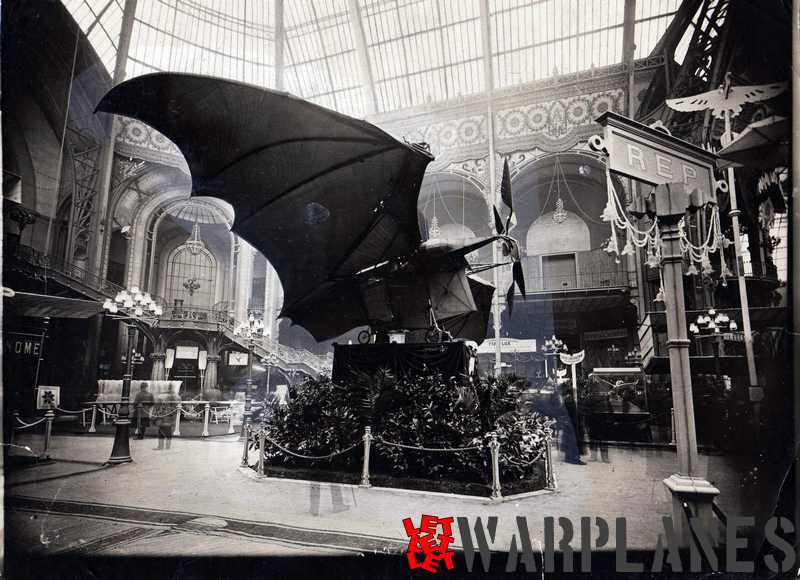The Clement Adér Avion
The Frenchman Clement Adér was an inventor and electrical/mechanical engineer born on 2 April 1841. Already in the eighties and nineties of the 19th century he pioneered with the construction of an heavier-than-air flying machine. One of the several built was called the Avion II. It was a steam-powered big machine with a bat-like wing and fitted with a nose mounted tractor propeller. In spite of its well-thought construction it was just too big and too heavy to fly. However, in August 1892 it must have left the ground at Satory (near Paris) for a very short hop of 100 m. If ever made, it’s lift-off was most likely caused by a gust of wind. By some people this is regarded as ‘the first powered flight’ but we can hardly call this ‘flying’ without any possibilities for in-flight control!

The name Avion (‘Aircraft’) was finally adapted for heavier-than-air flying machines.
In remembrance of Adér’s work his last machine, the Avion III, was exhibited at the first Paris Air Show, held from 25 September to 17 October held inside the Grand Palais exhibition building in the city centre near the Eiffel tower. In fact, this ‘Air Exhibition’ was only a modest part of the annual Automobile Show!
The Avion III never flew! Adér died on 3 May 1925 at the age of 84.
The photograph is an original print of a large-size glass plate negative. It was part of the photo collection of the Koninklijke Vereniging voor Luchtvaart (KNVvL) or ‘Royal Netherlands Aeronautical Society’.
In the mid-fifties of the last century it was used for publication in the aviation magazine Avia–Vliegwereld. Since the editors only wanted to use the image of the Avion III the surroundings were blanked-out with white retouch paint. Without the possibilities of modern-day Photoshop this was normal procedure at that time!
The paint was just left on the photo when it was filed again and the retouched photo stayed there until it was acquired a few years ago by the Aviodrome Museum as part of the big photo archive of the former Avia-Vliegwereld editorial board.
I have removed the white paint by carefull flushing with luke-warm water and drying. With the paint removed a lot of additional details became visible! Unfortunately some of the retouch paint has irreversibly absorbed to the gelatin layer of the photograph. It can be seen as a slight white haze around the aircraft.
In spite of this, we can only say this photograph is RARE (and historically important as well!).
Nico Braas






